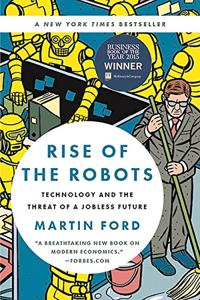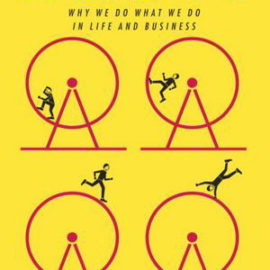
Want to learn the ideas in Rise of the Robots better than ever? Read the world’s #1 book summary of Rise of the Robots by Martin Ford here.
Read a brief 1-Page Summary or watch video summaries curated by our expert team. Note: this book guide is not affiliated with or endorsed by the publisher or author, and we always encourage you to purchase and read the full book.
Video Summaries of Rise of the Robots
We’ve scoured the Internet for the very best videos on Rise of the Robots, from high-quality videos summaries to interviews or commentary by Martin Ford.
1-Page Summary of Rise of the Robots
Overview
In many ways, being alive today is a good thing. We have access to technology that our grandparents never had. Ray Kurzweil has said that if you have a smartphone, you’re basically carrying around billions of dollars’ worth of capability by the standards of just a few decades ago. Furthermore, we can learn about anything thanks to online learning resources and scientific advancements in medicine and space exploration. This means we might see solutions for climate change, diseases, and space travel in our lifetime.
Martin Ford believes that advances in automation will lead to the destruction of jobs and a crisis for the entire economic system. He thinks that people will have less money, which may affect their spending habits. In order to prevent this from happening, he proposes a solution: A basic income guarantee should be given to all citizens in America.
In this book, you’ll learn about how scientists have been predicting the risks of automation for decades. You’ll also examine why automation doesn’t just threaten blue-collar workers, but white collar ones as well. Furthermore, you’ll explore why the internet sector won’t save the middle class and that government intervention is needed to handle automation. Finally, we will discuss why a basic income guarantee doesn’t threaten capitalism in any way.
How the Jobless Future Was Predicted Decades Before It Began
There was much fear that machines would replace the workforce in the 1950’s. In 1949, there was already fear of this happening when a scientist named Norbert Weiner predicted that computers could create an industrial revolution as it had done at the University of Pennsylvania where they built the first general-purpose electronic computer. Three years later, Kurt Vonnegut explored this idea further in his book Player Piano (1952) which describes how most people were unemployed and lived empty lives because all work was performed by machines.
In 1964, an Ad Hoc Committee on the Triple Revolution published a report to President Lyndon B. Johnson that predicted automation would lead to unemployment and inequality. The committee proposed a solution: The implementation of guaranteed income for all people. However, it turned out that the prediction was wrong because unemployment rates fell after its publication.
It turns out that the Ad Hoc Committee was right about automation being a threat to jobs. The median real wage has decreased by 13% since 1973, while productivity has increased by over 200%. Salaries for Wall Street executives, superstar athletes, and other members of the world’s 1% wealthiest are skyrocketing as ordinary workers receive less compensation for their work. Over the past half-century in America, new job creation has slowed down because companies at the forefront of automation technology have mastered maximizing profits with fewer employees. For instance, General Motors had nearly 840 thousand workers in 1979 but only generated $11 billion; Google produced $14 billion profit with just 38 thousand employees in 2012.
In the US, there are fewer jobs available and less people working. The unemployment rate has gone down since the 2008 economic crisis because people have given up looking for work. Today, almost 20% of adults between 25-54 don’t participate in the labor force at all. Many more apply for disability payments than they did a decade ago even though workplace injuries haven’t increased during this time period, which leads experts to believe that many people who can’t find a job are abusing disability programs as a last resort when they give up on finding employment.





